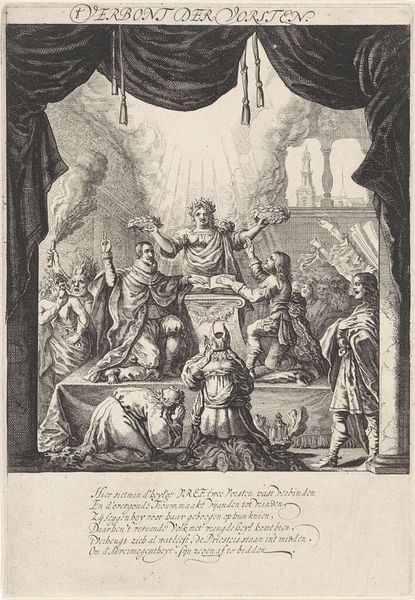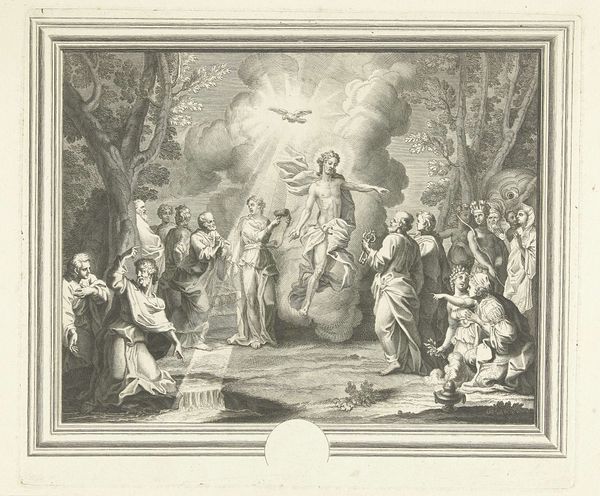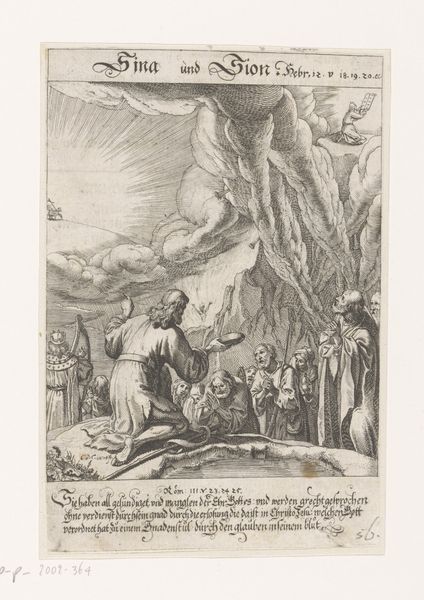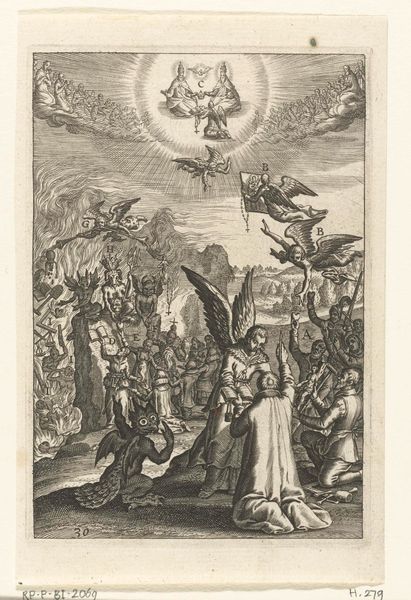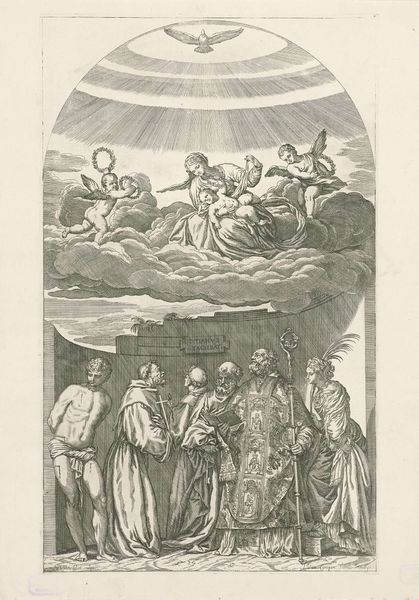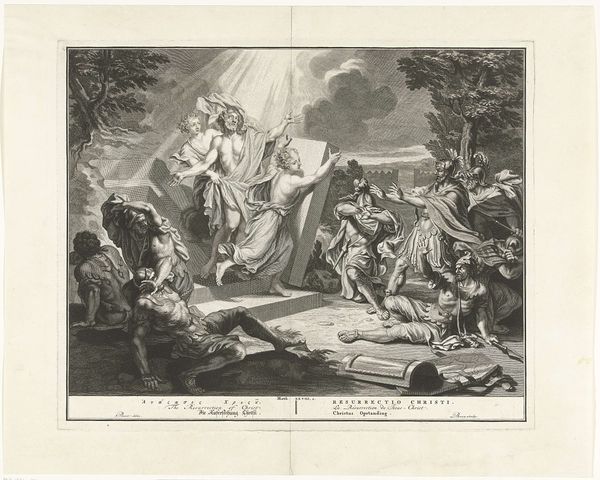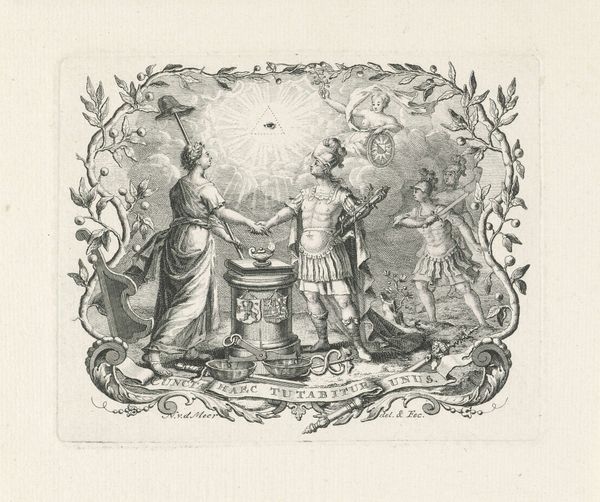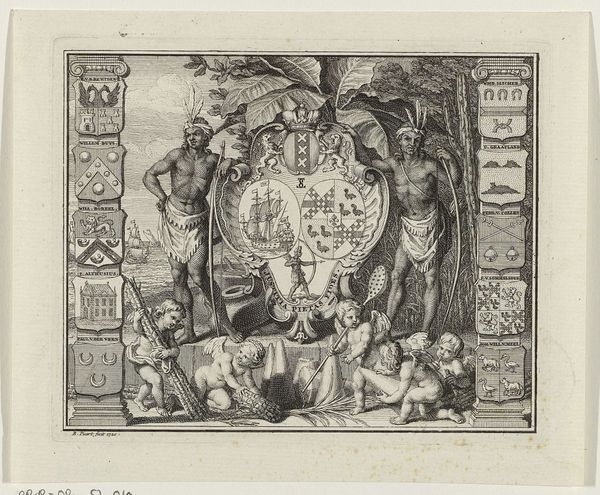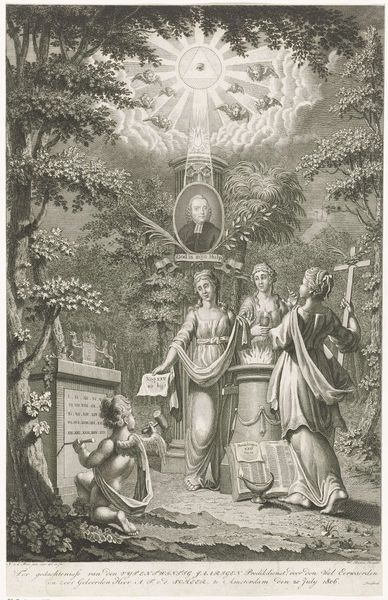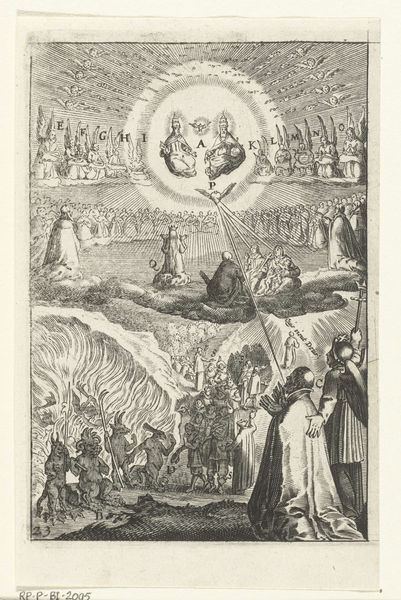
print, engraving
#
baroque
# print
#
old engraving style
#
figuration
#
history-painting
#
engraving
Dimensions: height 225 mm, width 275 mm
Copyright: Rijks Museum: Open Domain
Curator: Here we have Cornelis Galle I’s engraving, "Doop van Christus," dating from after 1595. It’s held right here at the Rijksmuseum. Editor: It's stunning—the composition almost vibrates with energy, doesn't it? All those figures, the swirling light... It feels incredibly dynamic. Curator: Galle's skill with the engraving technique truly shines here. Notice the fine lines, the cross-hatching; this demonstrates exceptional technical proficiency. And the choice of a print allows for wider circulation, thus distributing the religious message across different societal layers. Editor: Absolutely. Prints like these were instrumental in spreading religious and political ideas. Thinking about the historical context, images of baptism were also loaded—not just spiritual rebirth, but social inclusion, conformity to societal norms, very powerful visual tools of the period. Curator: And consider the paper itself, most likely linen or hemp-based. Paper production was becoming increasingly industrialized, and yet, this print retains the marks of craft, of the human hand translating the divine narrative through laborious means. Editor: Right, this labour reminds me of larger questions of faith and society back then. Look how the scene depicts a hierarchy between heaven and earth, as reflected in social structures. The engraver reproduces this power structure. The contrast, it’s heavy. Curator: Heavy indeed, yet undeniably masterful in its rendering. Editor: The Baroque style certainly lends itself to this sense of grandeur. But when I look closer I find details about power, obedience. A constant push for the public’s participation in those beliefs... Even today it remains as a striking cultural document, a reminder how the convergence between social messaging, labor and visual representation in artwork affect the way in which history and ideology become real. Curator: Precisely! Thinking about Galle’s tools, his burin meticulously carving into that copper plate—it grounds these lofty ideas in a tangible, almost earthy process. And the proliferation of these prints shaped art production overall by placing new demands on artists and material supplies. Editor: To step away for a moment and ponder at the long journey this artwork took across time and the complex issues it still raises, the engraving is evidence of an art piece's significance way beyond just religious art. Curator: Yes. Now, let's continue onwards.
Comments
No comments
Be the first to comment and join the conversation on the ultimate creative platform.
